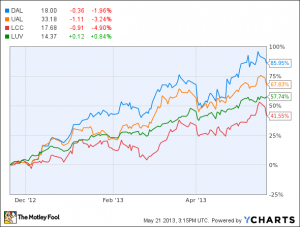
When you are new to investing, it is vital to remember that you should only look for the good stocks. However, once you get the results you wanted, you can then start thinking about different types of investing. Counterintuitive investing is not something anybody would recommend – but you can actually earn money by buying shares from bad companies.
Still, you should bear in mind that those investments pay off only when you believe that the sector will go through a turnaround. If your hypothesis is correct, you are bound to make a significant amount of money.
Before we delve into the subject even further, it is crucial to warn you against this technique. Counterintuitive investing should be restricted to enterprising investors – those who possess enough knowledge and experience to survive the risks. In addition, beginners shouldn’t try to use this technique because most of the time, they don’t have the income and the net worth to cover their losses.
Counterintuitive investing also requires you to have a specific temperament. This method leads to many frustrations, and it is not for the faint-hearted. Furthermore, you have to remember that it is far easier investing in an excellent business and building up your fortune that way.
If you do not think that you have what it takes, then you can always invest in index funds or build your blue-chip stocks portfolio.
Bad Investing: An Oil Industry Example
Let’s create a situation here. For example, let’s say that it is the 1990s and you have some spare capital. You wish to use it for speculation because you will not miss it if you lose it.

In those years, you could have bought a barrel of crude oil for $10. It is a good investment if you believe that the price will go up to $30. Therefore, the final thing you have to do is to pick a company. If you have been investing for some time now, you know that you should look for successful companies. Still, you could actually use the counterintuitive technique and invest in poor oil companies. But, why would you do that?
These are our two imaginary companies:
- Company A, which has fantastic economic aspects. The price of crude oil is $10, and their expenses are $6 for a barrel. Profit is $4.
- Company B, which has made a few mistakes along the way. Their expenses are $9 for a barrel, so they have only $1 profit.
In our hypothesis, the price could go up to $30. Therefore, company A would experience a 600% profit increase – $24. However, company B would have a 2,100% increase – $21.
That still means that the first company is a better business to invest in. However, company B is a better stock to have in your portfolio.
How is this possible?
Bad business stocks turn into good stocks because of the operating leverage. It refers to fixed expenses the company has to pay every month so that they could stay in business.

Those kinds of companies have enormous expenses which they need to cover. Otherwise, they could lose more money, and the company could even break even. However, the leverage works both ways, and it is a double-edged sword.
If they don’t have enough money to cover the expenses, the companies have to take certain measures to stay in business. There could be pay cuts, layoffs, and closings of specific facilities. However, if they go over the threshold, the profits could turn into an excessive amount of cash. That could create even more trouble for the owners.
Where can you find high operating leverage companies?
Asset-intensive industries. For example, steel mills and airlines. When they suffer a major setback, they tend to go bankrupt quite fast. In addition, when they go under, they often pull a number of investors with them. Still, when everything is good, their share prices are over the roof. Investing in them could make you incredibly rich, at least for a while.
Commodity-dependent industries. Businesses in these industries often have fluctuating revenues. Because of that, most of the time, they suffer through profitability swings. Their fixed costs cannot always adjust as fast as the commodity market value, so they can be an attractive investment. These could be copper producers, oil exploration companies, etc.
Conclusion
Even though you can use this technique successfully, there are certain drawbacks to it. Investing in bad businesses is not easy, and it could cause you many headaches along the way. Furthermore, there are easier ways of building your fortune, and they don’t demand that much stress and speculation.
Instead of delving into counterintuitive investing, you should try to find companies that are in a good economic situation. They are a safer option that will surely bring you the fortune you have always wanted. And, if there are some losses along the way, you can diversify your portfolio a little bit and cover up any misfortune.